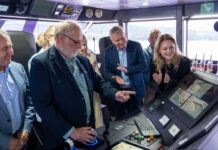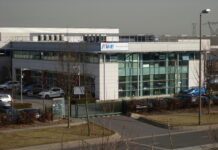
NYK has ordered its sixth liquefied petroleum gas (LPG) dual-fuel very large LPG / liquefied ammonia gas carrier (VLGC) at Kawasaki Heavy Industries (KHI). The ship will be built by KHI Sakaide Works and will be delivered in 2026.
This vessel is the eighth in NYK’s fleet of LPG-fueled LPG carriers and the sixth of a new type of vessel capable of transporting ammonia and responding flexibly to various trade patterns.
Furthermore, in addition to the LPG dual-fuel engine, the ship will have a shaft generator that can generate electricity during the voyage by using the rotation of the shaft that connects the main engine to the propeller. Since the diesel generator can be stopped during regular seagoing transit, realizing full navigation with LPG fuel will be possible except for the use of a small amount of pilot fuel as an ignition source.
When LPG is used as fuel, exhaust gas from the ordered VLGC will contain at least 95% less sulfur oxide (SOx) and 20% less CO2 than NYK’s conventional VLGCs using heavy-oil fired engines.
This new VLGC will comply with the SOx Global Cap regulations that were tightened since January 2020 and with the IMO’s Energy Efficiency Design Index (EEDI) Phase 3 regulations, which implemented stricter CO2 emission standards from April 2022.
Moreover, the vessel is expected to be given notations by Nippon Kaiji Kyokai (ClassNK) as a VLGC that has a preparatory design in accordance with the guidelines issued by ClassNK so that this vessel may use ammonia fuel in the future.





